How do we harness interest in Lionesses as growth of English women's football leaves US in the shade
Leah Williamson, Beth Mead and the women who had wowed a nation at Wembley, wrote a letter to then-Conservative leadership candidates Liz Truss and Rishi Sunak demanding an equal PE provision for girls and boys after learning that, according to Football Association (FA) data, only 63 per cent of schools offered girls’ football in lessons.
It was a selfless act, one that struck a chord with the mood at the time.
Advertisement
Hide AdAdvertisement
Hide AdHow could the enormous upsurge in interest in women’s football be harnessed for the greater good?
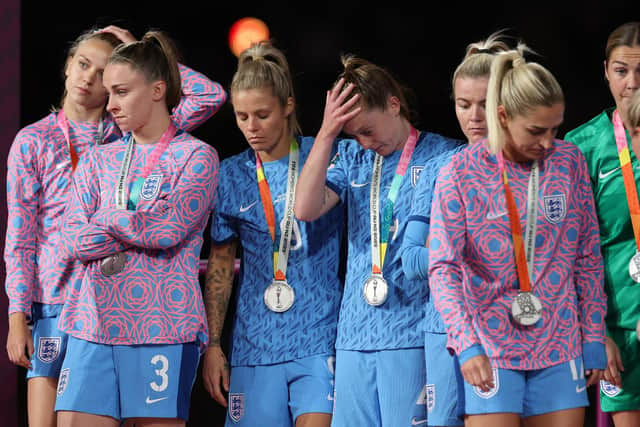

Our heroines were taking the lead.
Their campaign paid off on International Women’s Day in March, when the government announced that girls would be granted equal access to all school sport as part of a package of measures backed by over £600 million in funding over the following two academic years.
Six days on from their heartbreaking defeat in the World Cup final at the hands of Spain in Sydney, with the glow of a hugely successful tournament still shining bright, what do the Lionesses of Millie Bright, Lauren Hemp et al have as a follow-up act?
Well, already Bethany England, the Barnsley-born Tottenham Hotspur striker, has called for more investment from a broad range of stakeholders before she had even boarded the plane home.
Advertisement
Hide AdAdvertisement
Hide Ad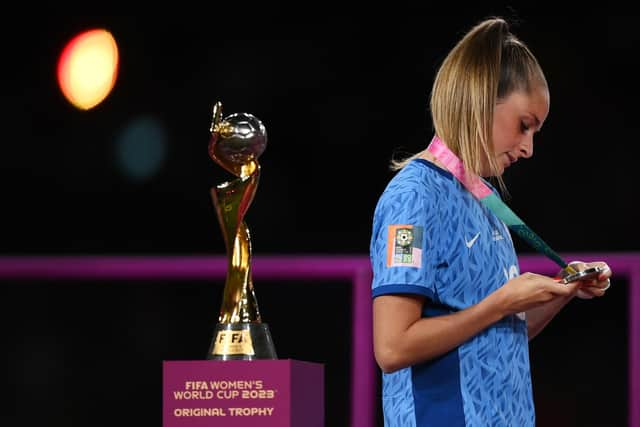

And culture secretary Lucy Frazer confirmed in Australia that the government is on track to be able to offer a universal package of school sport to girls by the end of the initial two-year period they set out.
Positive signs, then, and as the statistics reveal that those inspired have been given a pathway.
The FA called it their Inspiring Positive Change two-year strategy, and for the six months after the Lionesses’ Euro triumph, recorded only positive results.
Among the numbers, were:
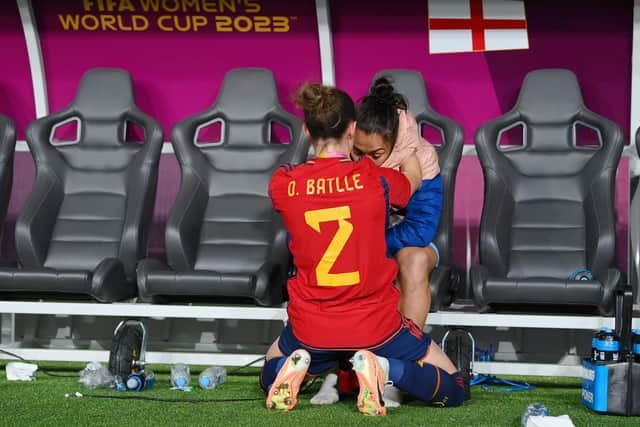

• Over 416,000 new opportunities to play, coach, officiate and volunteer created in England across schools, clubs, and the community across the nine host cities of Euro 2022, of which Rotherham and Sheffield were two;
Advertisement
Hide AdAdvertisement
Hide Ad• Over 2,300 volunteers recruited and trained as part of the tournament
• 7,800 girls and women newly registered and playing in clubs across the nine host cities
• Over 16,000 girls and women playing recreationally across the nine host cities
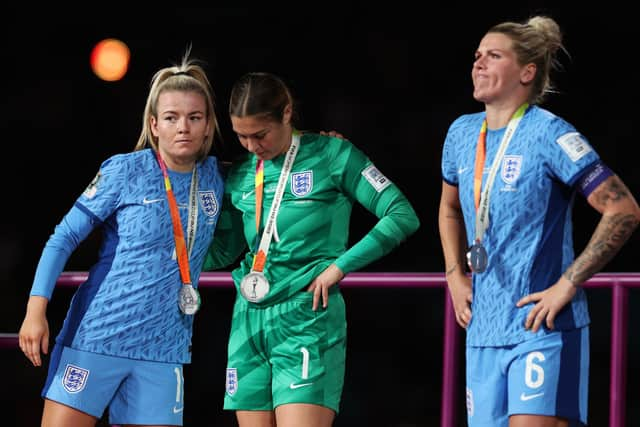

3,500 schools engaged in the tournament
• 5% increase in female affiliated clubs from June 2022 – December 2022
Advertisement
Hide AdAdvertisement
Hide Ad• 9% increase in female registered football teams from June 2022 – December 2022
• 12.5% increase in female players registered from September 2022 – December 2022
• 15% increase in female youth teams from June 2022 – December 2022
Still girls lag behind boys when it comes to playing - 55 per cent of boys played football in the last week compared to 22 per cent of girls, per Sport England - but the gap is narrowing.
Advertisement
Hide AdAdvertisement
Hide Ad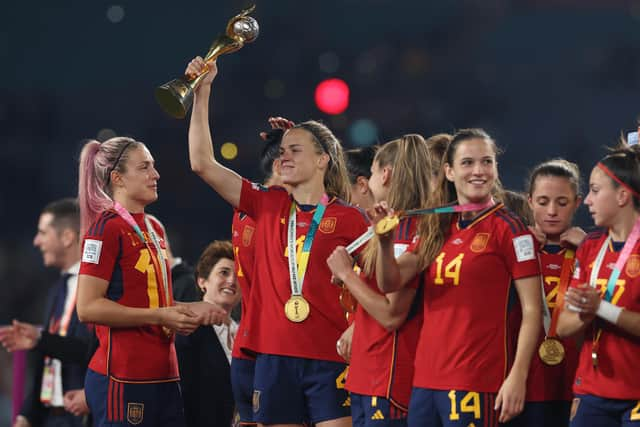

Statistics only tell half a story, or can skew it, which is why the eyeball test is always the safest, and there I lean on my own experience.
As a father of a young family in a leafy suburb of Rotherham just 15 minutes from the New York Stadium which hosted Wendy Renard and the France team at last year’s Euros, I have not only seen tangible proof but taken an active role.
My local team, Bramley Sunnyside Junior Football Club, like many in the Sheffield and Hallamshire FA ecosystem which will be replicated across the country, have placed great emphasis into getting girls into football.
They launched the Wildcats Academy for 5-11-year-olds in April, which was my six-year-old daughter’s first introduction to organised and fun football sessions.
Advertisement
Hide AdAdvertisement
Hide AdEvery Sunday morning quickly became Tuesday night training sessions, an introductory five-a-side tournament for the first Under-7s Girls teams and maiden season to kick-off in early September.
Yours truly has even got a tactics board tucked under his arm, complete with bag of training balls, first aid kit, bibs, cones and a car boot full of equipment.
The many virtual lessons provided by the FA for complete novices like myself - Safeguarding, the EE Playmaker etc - have been a Godsend and are highly recommended.
With new players to tap into comes new volunteers and new investors. Weetabix have already put their name to the Wildcats Academy.
Advertisement
Hide AdAdvertisement
Hide AdGirls football is growing and right now the feeling is it can only get bigger.
“We’ve got to make sure this is not a one-off,” said Bright on Sunday night, composing herself and thinking of the future when no doubt all the former Killamarsh Juniors footballer wanted to do was retreat to her corner of the dressing room to consider the once-in-a-lifetime opportunity of hoisting a World Cup trophy that had been wrestled from her grasp.
Ensuring future lifetimes and generations get another chance appears in safe hands.
Indeed, English football looks set up for many years to come.
Advertisement
Hide AdAdvertisement
Hide AdEuropean champions and World Cup finalists already, the next four years bring an Olympic Games (albeit as a Great Britain team they will dominate), a European Championship in Switzerland in 2025 and another World Cup in 2027, venue TBC but likely to be the United States.
Which brings us to the USA, for so long the immovable force at the top of women’s football.
The landscape-shifting moment England is currently going through happened half a century ago in the States when in 1970s - right around the time women’s football was effectively outlawed by the FA in this country, preposterously - with the enactment of Title XI, which promoted gender equality in education and led to major investment in girls’ sport at high school and college level.
Their reward for that trailblazing view on women’s sport was victory in the first Women’s World Cup in 1991, again in 1999, and with their Megan Rapinhoe-led golden generation in 2015 and 2019.
Advertisement
Hide AdAdvertisement
Hide AdThe shock at their second-round exit after a limp performance to that point was based on that history and their previously undisputed position as queens of football.
A little over a decade ago, scholarships in America were the most sought-after route into a growing professional game. It’s the road Rachel Daly took from Harrogate.
But now, for 18, 19-year-old female footballers, the best route is through the academies of established men’s teams who have seen what having a female extension of their brand can do for their global image.
A decade ago Doncaster Rovers Belles, Lincoln Ladies and Bristol Academy were Women’s Super League teams. Now it is Chelsea, Manchester City, Manchester United and Arsenal. Sound familiar?
Advertisement
Hide AdAdvertisement
Hide AdThe World Cup in Australia will in time be remembered as the turning of the page from the end of the American era to the European revolution.
Three European teams reached the semi-finals. Moreover, players from the English top flight combined for more minutes on the pitch than any other league. Spain’s was second, France third. The once-mighty USA a distant fourth.
With participation on the rise, more pathways open than ever before and women’s football team the pride of the nation, win or lose, women’s football is only going to get bigger.